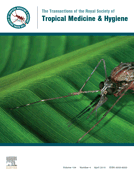-
Views
-
Cite
Cite
Agnès Fleury, Alfonso Escobar, Gladis Fragoso, Edda Sciutto, Carlos Larralde, Clinical heterogeneity of human neurocysticercosis results from complex interactions among parasite, host and environmental factors, Transactions of The Royal Society of Tropical Medicine and Hygiene, Volume 104, Issue 4, April 2010, Pages 243–250, https://doi.org/10.1016/j.trstmh.2010.01.005
Close - Share Icon Share
Abstract
Human neurocysticercosis (NC) is endemic in most countries of Latin America, Asia and Africa and is re-emerging in some industrialized nations. Both within and among endemic countries, NC is very variable in its clinical and radiological features, as well as in the intensity of the immuno-inflammatory reactions of the hosts. This review, focusing on the Mexican experience, describes and interprets the heterogeneity of NC as the result of different combinations among factors associated with the parasite, host and environment. The review may serve to foster similar descriptive efforts in other endemic areas of the world in order to facilitate the identification of the distinct factors that participate in the complex pathogenesis and diverse clinical outcomes of NC. In particular, it is necessary to understand the precise physiopathology of the inflammatory reaction associated with NC, as inflammation is one of the characteristics of those NC cases that are clinically more severe and less responsive to current treatments. Devising new medical interventions through the use of molecular regulators of the innate and adaptive immune responses of the host is a largely unexplored approach that could improve the existing forms of treatment.






Comments